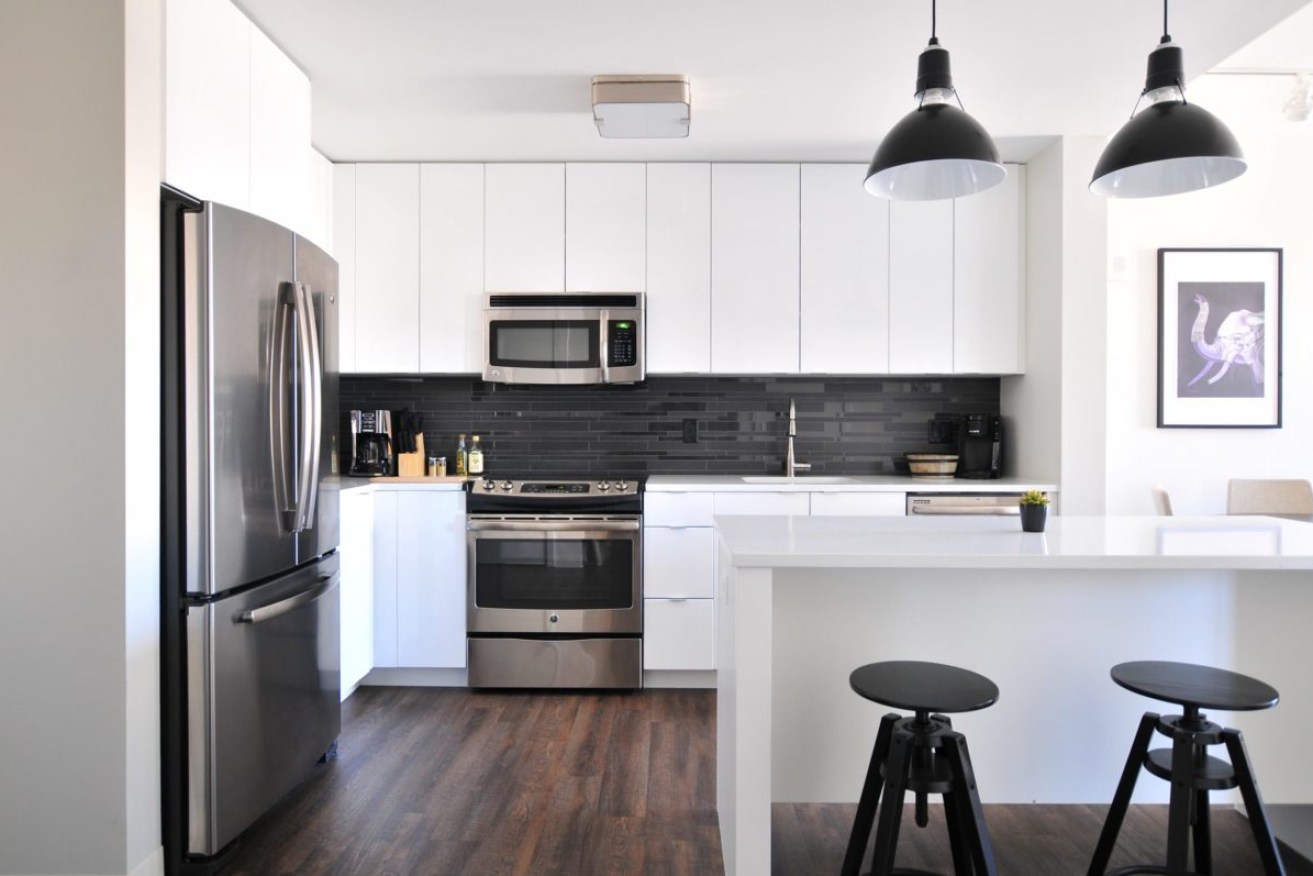Trading spaces: Is the shift to apartments slowing, or taking off?
With COVID-19 significantly impacting the outlook for the apartment market, in this edition of Residential Reflections, JLL’s Head of Residential Research Leigh Warner examines the longer-term drivers of apartment market demand and asks the question is the shift to apartment living over or just beginning?

(Naomi Hébert/Unsplash)
Is the shift to apartment living over or just beginning?
The last decade has been a period of enormous growth in apartment supply in all Australian markets. This reflects the confluence of a number of economic, demographic and social trends that have seen apartment living accepted like never before in a country that has typically embraced space and a wide urban footprint. However, it is clear that Australians have consciously or unconsciously started to ‘trade space for place’ and embraced a higher-density, amenity-rich lifestyle.
This shift has happened in our large cities of Sydney and Melbourne where affordability and population pressures have been immense. However, it has also been evident in our smaller capital cities where these pressures have not been as strong. This clearly highlights that a shift in attitudes has occurred.
Nevertheless, COVID-19 has thrust Australia into its first recession since 1991 and cast significant doubt about the outlook for the housing market. Australia’s population growth will also be significantly lower over the next few years. These factors are likely to keep apartment pre-sales muted and new supply limited until at least around 2022-23.
While market conditions will temporarily reduce apartment supply and, at the margin COVID-19 may weaken attitudes to high-density living for a period, we firmly believe to the shift to apartments is not over and that Australia has a lot further to go on the journey to a more dense urban environment. As such apartments will forevermore be a much greater share of new housing construction.
The shift to apartments
At the last Census in 2016, only 13.1% of Australia’s housing stock was apartments, with still 72.9% detached housing 12.7% semi-detached. This proportion of apartments is low by international standards. By comparison, the proportion of apartments is around 30.1% in the UK, 32.4% in the US, 43.5% in Japan and 94.8% in Singapore. However, as Table 1 shows, the proportion varies greatly across Australia’s major cities, from 28.1% in Sydney to just 6.6% in Perth.
Nevertheless, the steep change in apartment living is illustrated in building approvals since 2016. Over that time, apartments have been 29% of approvals nationally and much higher than the their proportion of total stock at the 2016 Census in all major cities. Even Perth saw apartments account for 18% of approvals, while in both the ACT and Sydney approvals were more than half of all approvals.
Over the same period, dwelling (all types) prices have grown by around 73% in Sydney and 56% in Melbourne, but have grown by less than wage growth in other capital cities (See Figure 1). In fact, Perth prices are 13% lower than a decade ago. Regional dwelling prices have also grown far less than wages over the past decade.
Sydney and Melbourne are only around a third of Australia’s housing stock. Consequently, dwelling prices in around two thirds of Australia are actually more affordable relative to wages than a decade ago. Added to this, mortgage interest rates have never been lower, so lower loan servicing costs have further boosted affordability. Given that apartment approvals have surged in across Australia (even in Perth were prices are lower), there must be much more to the trend than just prices.
Population growth and planning pressures have undoubtedly played a role. Australia’s population has continued to grow at a very strong 1.6% p.a. over the past decade, which is far faster than other comparable developed economies and around triple the OECD average. This has been particularly evident in Victoria, which has grown at 2.1% p.a. over that period, which translates to accommodating an average of an extra 122,000 people every year.
Population growth has also been very concentrated on the east coast of Australia. Overseas migration over the decade has been 80% into NSW (34%), Victoria (31%) and Queensland (15%), creating immense planning pressure in Sydney, Melbourne and South East Queensland (including Brisbane, plus the Gold and Sunshine Coasts). This migration itself is a driver of apartment demand, with a very large proportion coming from Asia where apartment living is the dominate dwelling type. Further a large part of migration is temporary migration, which lends itself to inner city apartment living.
However, again population growth alone cannot account for the trend toward apartment living because areas with much lower international migration, such as Adelaide, have also shifted toward apartment living.
Planning authorities have certainly responded to population pressures by encouraging greater infill density as opposed to greenfield development on the urban fringe. This in part reflects the lack of greenfield land in some cities (particularly Sydney), but also density is a more cost-efficient solution for public officials because it better leverages existing infrastructure and reduces the need for expensive new infrastructure. As such, planning schemes across Australia are almost unanimously encouraging high or medium-density apartment development along major transport routes and around existing retail precincts.
So all these factors partially explain the shift to apartments, but the big intangible factor is the attitudinal shift among younger generations who have seemingly rejected moving to the urban fringe to start on the property ladder like their parents did. Instead, many are making a conscious decision to maintain the inner-urban lifestyle they have come to enjoy and both rent and buy apartments instead of other dwelling types. They have chosen to trade space for place. While this is hard to quantify, it has undoubtedly been a trend that has been well written about by demographers and social commentators.
So what is next?
The COVID-19 crisis will undoubtedly temporarily disrupt the rise of apartments. This primarily because the uncertainty it has created and the potential for near-term price declines will make all apartment buyers very wary to commit to an apartment off-the-plan that may still be two or three years from completion.
Further, in Sydney and Melbourne in particular, the temporary closing of borders and drop in population growth, on the back of strong recent construction, will mean there will be an overhang of existing apartment available that buyers can be more confident in buying in a soft market.
As such, it will be very difficult for developers to reach the pre-sales hurdles that banks require to fund construction, meaning most projects will be either delayed or abandoned completely and very few will progress to construction.
One potential silver lining is that the crisis may boost the prospects of build to rent (BTR) residential (which is institutionally owned and operated rental stock). With developers in the traditional build to sell market facing a challenging time getting projects going, it is a good time for BTR operators to get a foothold and acquire sites with less competition.
Also governments are keen to incentivise any building activity to stimulate economic recovery, so consequently it is a much better environment to solve some taxation and planning impediments which have been hampering the sector’s emergence. Further, with office and retail markets challenged, major capital sources will be very keen to support the sector to find alternative investment opportunities.
COVID-19 may also in the short-term soften sentiment towards high-density living. Nevertheless, we believe this will prove short-term and not be strong enough to offset the bigger longer-term mindset shift in Australia towards apartment living.
As such, we still maintain that we are early in the journey towards a high-density lifestyle and apartments will inevitably form a much larger proportion of new housing over coming decades, regardless of the short-term interruption caused by COVID-19.
This article was produced as part of JLL’s Real Estate Review H1 2020 edition, which is now available.
Click here to register and view the full Queensland edition of JLL’s Real Estate Review H1 2020.
Previously published on InQueensland:
- Qld commercial property podcast: Game on for industrials
- Industrials set to soar as e-commerce becomes the ‘new normal’
- Qld commercial property podcast: Are COVID office deals worth moving for?
- Close to home: Virus breathes new life into local shopping centres
- The missing link: Is there another Brisbane precinct emerging?
- Big questions to answer about a new lease on office life
- Here’s how the post-pandemic office is shaping up
- Maroochydore cable connects our shores with the world













